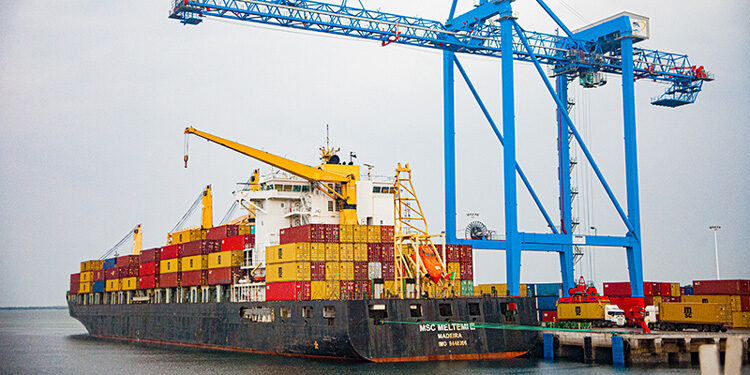The Port of Dar es Salaam has set a historic performance milestone, handling 27.7 million tonnes of cargo in the 2024/25 financial year, up from 23.69 million tonnes in 2023/24 and just 18 million tonnes in 2021/22.
This unprecedented growth is being driven by global logistics giant DP World and Tanzania East Africa Gateway Terminal Limited (TEAGTL), whose entry into port operations has transformed efficiency, capacity, and cargo flow.
Speaking on behalf of TPA Director General Plasduce Mbossa, Acting Port Director Abed Gallus credited the sharp growth to the strategic public-private partnership that placed DP World in charge of Berths 0–7 and TEAGTL overseeing Berths 8–11.
“Since DP World and TEAGTL began operations, we have seen a step-change in performance,” Gallus said. “Their world-class systems, discipline in berth management, and modern equipment have been central to this success.”
One of the most striking improvements has been in vessel turnaround time.
“Container ship service time has dropped from ten days to just three days, which has had a ripple effect along the entire trade corridor—from factories to retail shelves,” Gallus noted.
The operational gains have enabled the port to handle larger vessels than ever before. Mixed-cargo ships that previously carried 15,000 tonnes are now docking with up to 50,000 tonnes, while bulk grain vessels have reached 65,000 tonnes.
These advancements stem largely from the Dar es Salaam Maritime Gateway Project (DMGP), which deepened and reinforced the harbour to 14.5 metres, allowing for heavier and deeper-draft ships.
Gallus emphasized that the port’s rapid rise is a direct outcome of the public-private partnership model, with the government setting the policy framework while DP World and TEAGTL execute operations at a global standard.
The impressive growth at the Port of Dar es Salaam has been driven by a combination of operational efficiencies and strategic management practices. A key factor has been maintaining high equipment uptime, ensuring that cranes and other critical machinery operate at peak efficiency with minimal downtime.
This has been complemented by enhanced night-shift productivity, enabling the port to run seamlessly on a 24/7 basis and significantly increase throughput. In addition, disciplined berth scheduling has minimized vessel idle time, allowing for faster turnaround and smoother cargo handling operations. Together, these measures have created a streamlined system that maximizes capacity and drives sustained growth.
“This model has turned Dar es Salaam into a reliable, competitive regional hub,” Gallus said. “We have added nearly 4 million tonnes of cargo in just one year, thanks to this collaborative approach.”
The Dar es Salaam Port handles over 95% of Tanzania’s seaborne trade, making its performance critical to the national economy. Improved efficiency directly lowers logistics costs, strengthens trade competitiveness, and supports regional supply chains.
To maintain this momentum, TPA is now focusing on digital systems integration for faster documentation and clearance, routine maintenance to preserve assets and operational reliability, diversion of transit cargo to Kwala Dry Port to reduce yard congestion and city traffic, with much of this cargo now moved by rail.
“Our mission remains fast, seamless ship-to-shore operations, with inland facilities playing a vital supporting role,” Gallus explained.
This article was published by Githua Kihara, an editorial consultant for FEAFFA’s Freight Logistics Magazine. For any inquiries, please contact us via email at editorial@feaffa.com or freightlogistics@feaffa.com, or reach out to Andrew Onionga directly at onionga@feaffa.com or oningaam@gmail.com / +254733780240.





